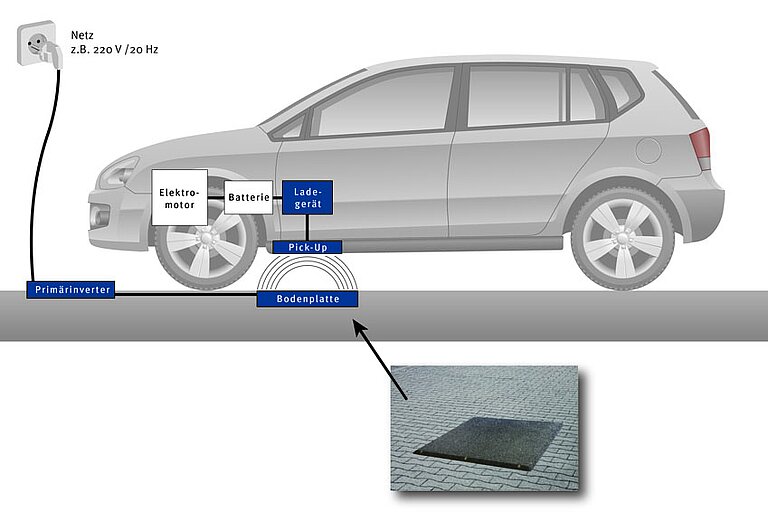Publications
![[Translate to Englisch:] [Translate to Englisch:]](/fileadmin/user_upload/Presse_und_Medien/mediathek/YouTube-Vorschaubild/NOA-Namur-Open-Architecture-Connectivity.jpg)
The electric toothbrush and the electric car are getting closer to each other. Because now electric vehicles can also can be charged without contact by induction. In addition to normal charging by plug and socket, inductive charging technology is to be the bridge into the future.

Inductive charging technology is already present in the everyday lives of many people. No matter whether it comes to industrial automation, automated guided vehicle systems, crane systems or simply toothbrushes – many systems have long been supplied with power inductively. ZVEI member companies which jointly developed this technology years ago and introduced it into the industry are today's global market leaders.
There is a great deal of innovation especially in the idea of making the charging process for electric cars more efficient, more reliable and, above all, faster. While drivers of classic electric vehicles have to drive to an E-charging station, unpack the charger cable, connect the plug, remove it again and pack the charger cable away, with inductive charging the car is simply parked over or against a charging plate.
“The actual charging takes place as a contactless energy transfer in the alternating electromagnetic field between the plate and car”, explains Herbert Zimmermann, head of electro-mobility at the ZVEI. The design and method of operation of the energy transfer correspond approximately to the method of operation of a transformer with mechanically separated coils. With inductive charging technology, an alternating current is applied to the primary coil. This in turn generates a magnetic field, which also induces an alternating current in the secondary coil used in the electric car that can be used to charge the car battery after rectification.
Since the distance between the primary and secondary coil is only eight to twenty centimetres, the magnetic field is built up in a very limited area between the charging plate and the secondary coil.
With a charging capacity of on average three kilowatts, charging a car battery with a capacity of 20 kilowatt hours currently takes a good six hours – much too long for a day-to-day use. Many member companies of the ZVEI are therefore conducting research on how to optimise the charging process.
This could be done with the development of inductive charging stations, which close the magnetic circuit using inductive paddles and at frequencies between 80-300 kHz can therefore reduce the charging time to around one hour and twenty minutes. The technology providers of the ZVEI however favour significantly lower field strengths. The resulting longer charging time of the battery can be circumvented by multiple short recharging.
This has been working in Turin since 2002: Here 20 electric buses operate on the inner-city scheduled service. As the energy storage capacity is not enough for a full day’s operations, all the buses are charged automatically and inductively at selected stops. Through this repeated charging, all vehicles are in continual service throughout the day.
In the Federal Republic of Germany too, it is the declared aim of the Government to establish Germany as a lead market for electro-mobility. This is expressly supported by the ZVEI, which points out its joint position on contactless charging technology. It says that electric vehicles must be seen not only as part of the new energy world but considered as an integrated system together with the associated infrastructure. In addition, it will be crucial that industry and politics can work together fast on sustainable concepts, in order to bring production and the sale of electric cars to series maturity. The establishment of an appropriate charging infrastructure is particularly important in this respect, because only in this way will it be possible to create acceptance of electro-mobility as a whole in the mind of the end customer.